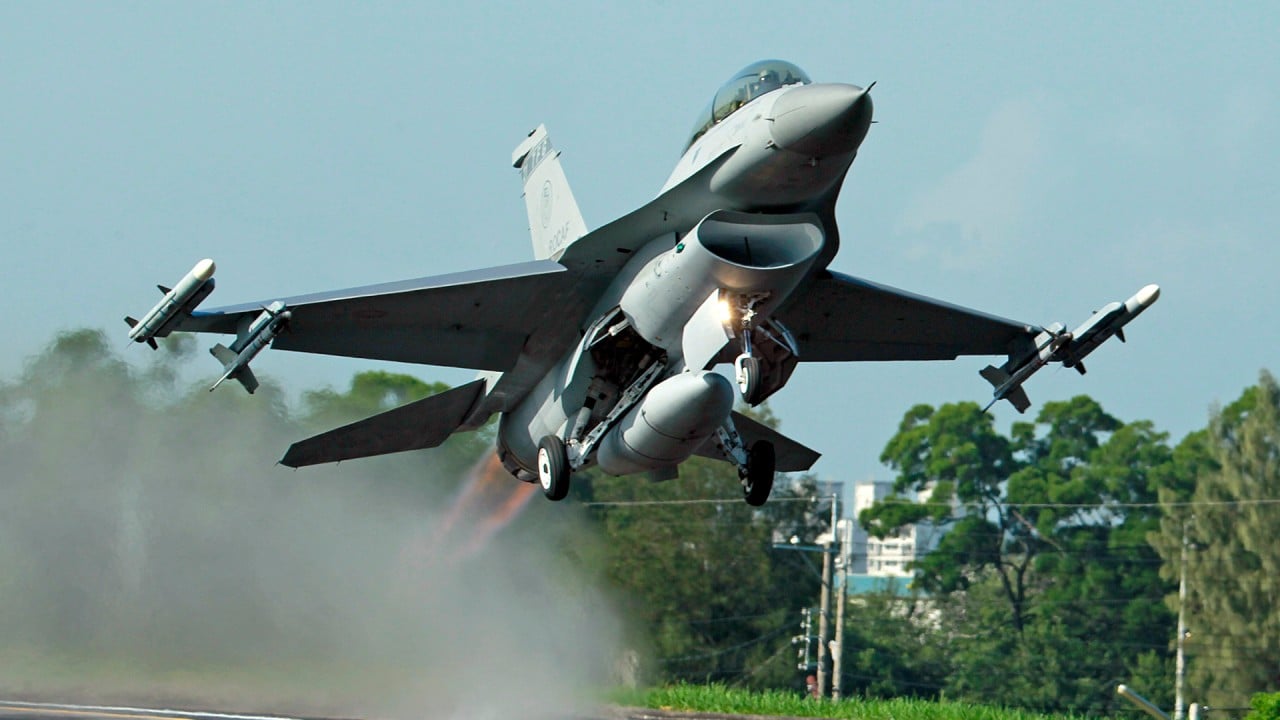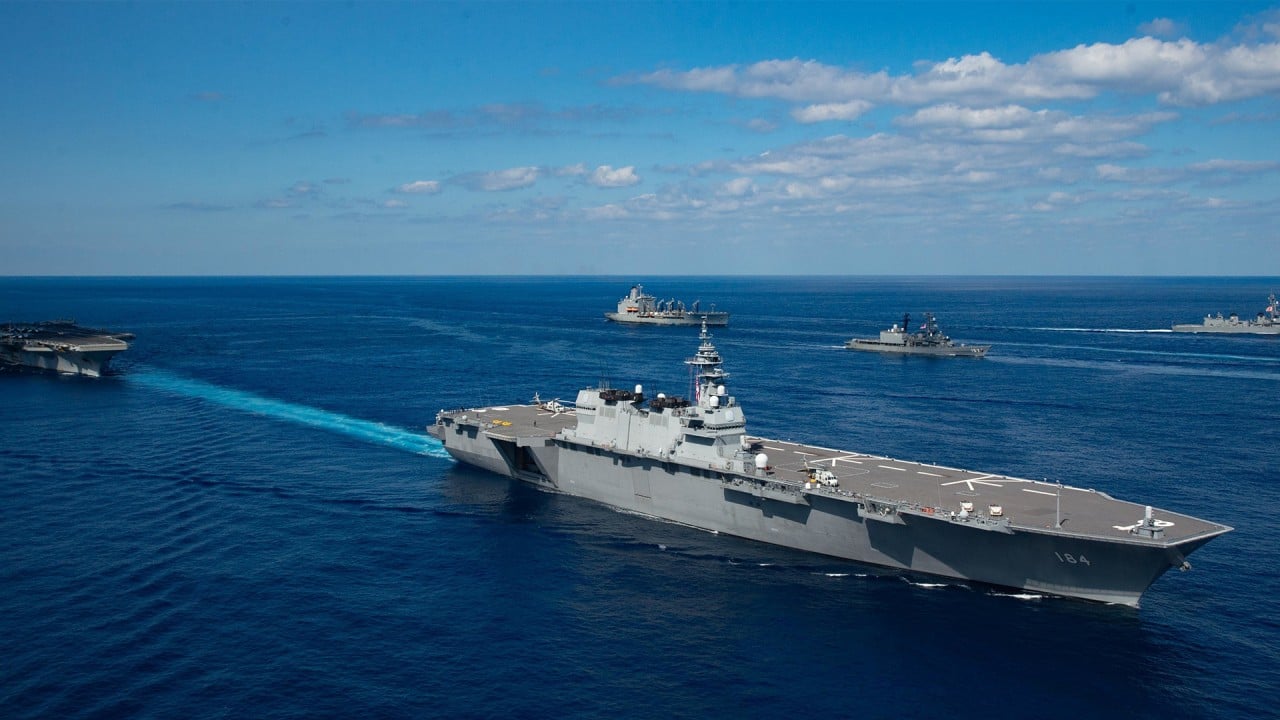
‘We’re a Pacific power’: Joe Biden faces pressure to hold hard line of defence against China
- The incoming president faces multiple challenges from China in regards to Taiwan, the South China Sea and India
- The world’s biggest navy belongs to China, a new milestone that the Pentagon disclosed in September
As a Biden administration takes the reins in Washington, the stakes have never been higher for the US relationship with China and the rest of Asia. In the third part of a post-US-election series, Washington correspondent Jacob Fromer explores how the president-elect will deal with a rising and more assertive Beijing on the defence front.
“[China] is a very relentless and ruthless competitor,” said Paul Heer, who spent decades as an intelligence analyst for the US Central Intelligence Agency (CIA) and served as the US government’s national intelligence officer for East Asia. “And we have to be very cautious and very much aware of that.”
“We’re a Pacific power,” Biden wrote in an essay last month. With US-China tensions soaring, and both countries seeing each other increasingly as adversaries, Beijing may put that to the test.
Last year, the Trump administration created a new, senior-level position at the Pentagon solely focused on China. It is currently held by Chad Sbragia, a China specialist in the US military.
Taiwan starts building submarine fleet amid military threats from Beijing
There is political pressure on Biden to hold a hard line with China, and all of Biden’s defence, intelligence and foreign policy picks will likely face intense scrutiny of their China positions at their Senate confirmation hearings.
His incoming national security adviser, Jake Sullivan, and his choice for secretary of state, Antony Blinken, are both alumni of the Obama administration. Sullivan does not need Senate confirmation for his role.
Some Republicans in Congress critical of Beijing have already accused Blinken and Sullivan of being naive about China’s rise. Both have made comments since leaving government suggesting that they now see China as more of a threat to US interests than they did when they last served in government.

In June, Flournoy wrote in Foreign Affairs that if China knew that the US was able to sink every Chinese ship and submarine in the South China Sea within 72 hours, then it might think twice about attacking Taiwan.
Biden and his advisers will have to decide how far they want to go to help protect it. In Biden’s essay published in October, he committed to “deepening our ties with Taiwan, a leading democracy”.
New Chinese engines will allow PLA planes to carry tanks to battlefield
Zhou Chenming, a Beijing-based military expert, said Beijing’s resolve to bring Taiwan under its fold “has never gotten enough respect from the US”.
“Compared to the past, the [People’s Liberation Army] is more confident, stronger, eager to get world’s recognition, and the last thing the PLA wants is smearing from the outside,” he said.
Amid the growing tension, some voices in both countries say that the two governments, including their militaries, should still be able to find ways to cooperate on issues like North Korea, Iran and climate change.
“China wants to establish as many communication channels as possible with the US military,” said Zhou.

02:28
Washington’s US$1.8 billion arms sale to Taiwan is first weapons deal of its kind in over 40 years
But in Washington, some observers say the US has already tried that kind of military-to-military cooperation with China, and it did not work.
Twelve years ago, at the end of the George W Bush administration, China for the first time sent its navy to join global counter-piracy patrols by the Gulf of Aden, on the western edge of the Indian Ocean – thousands of miles from the Chinese coast.
The US and its partners welcomed the collaboration as a sign that modern China was emerging as a responsible power.
Three months after the celebration, just after Biden and then-president Barack Obama were sworn into office, the mood changed fast: a slew of Chinese vessels were accused of harassing an unarmed American surveillance ship called the USNS Impeccable in the South China Sea. They clashed with water hosepipes and grappling hooks.
Obama’s response at the time was to call for more military-to-military dialogue.
US actions could raise risk of Taiwan war, says Chinese military researcher
In the years since, China has expanded its naval presence in the Indian Ocean. It opened its first overseas military base in 2017, in Djibouti, on the western edge of the Indian Ocean. The US also has a base in Djibouti.
In September, the Pentagon issued its report to Congress that China’s navy, with some 350 ships, is now the biggest in the world, giving Beijing more power and reach around the world.
“It just goes to show how quickly China is rising as a serious naval power,” said Toshi Yoshihara, a senior fellow at the Centre for Strategic and Budgetary Assessments think tank and the former chair of the US Naval War College’s Asia-Pacific studies programme.
“China is now undoubtedly, in addition to its permanent base in Djibouti, a permanent player in the Indian Ocean,” Yoshihara added. “And who would’ve imagined that 10 years ago?”

China has doubled down on its claims over the entire South China Sea by building an array of artificial islands there, rejecting its neighbours’ claims to the same territory and flouting an international tribunal that declared China’s actions there illegal.
In July, Trump’s State Department announced that it did not recognise nearly any of China’s territorial claims in the South China Sea.
Beyond the South China Sea and Taiwan Strait, Biden’s defence team will also be watching the border between China and India, the world‘s largest democracy.
Joe Biden’s foreign policy team to reject Trump’s ‘America First’ mantra
Manjari Chatterjee Miller, a professor at Boston University who studies China-India relations, said the clashes at the border had pushed India into a closer relationship with the US, which will remain close under Biden.
“During the Trump administration, India signed three defence agreements with the US in three years,” she said.
In 2017, the Trump administration also revived a defence partnership with India, along with Australia and Japan, known as the “Quad”.
But less clear is whether Washington will be able to translate those closer ties into more aggressive resistance against Beijing.
“The idea of using India as a counterweight to China has been floating around for a good two decades,” said Miller. “The question has been more whether India would be willing to be a counterweight to China, and the jury is still out on that.”

02:14
Japan-US hold joint military drills including cyberwarfare training as concerns about China grow
Biden and his team will also have to respond to China’s growing nuclear arsenal.
China is one of the world’s oldest nuclear powers, and one of just five recognised by the nuclear non-proliferation treaty, along with the US. But analysts say China recently has been modernising its nuclear arsenal in ways that lead some to wonder about their motives.
China in the past stuck to what analysts call a “second-strike strategy”, said Rose Gottemoeller, who served as the State Department’s top arms control official during the Obama administration. This means hiding or protecting nuclear weapons, so a country can counter-attack if someone else strikes first.
How Biden's administration will engage with China on key issues
“Now they seem to be wanting to acquire the big hardware pieces like long-range bombers and submarines,” said Gottemoeller, now at Stanford University. “Those are very expensive to build.”
“I guess they think they’re the tools of a great power,” she added. “But I think they do lead to questions as to what their plans are, in terms of nuclear doctrine in the future.”
The Trump administration has tried to push China to join nuclear negotiations with the US and Russia, but Beijing insists that those are unnecessary because its stockpile of weapons is smaller.
Biden has made clear that whatever challenges await him when he takes office, he and his team plan to embrace American allies as vital partners without whom the US cannot succeed – a contrast with Trump and his own team, who tended to see many of the US military alliances through a transactional lens.

On Tuesday, Biden said the US was “ready to confront our adversaries, and not reject our allies”.
Drew Thompson, a former US Defence Department official responsible for managing bilateral relations with China, Taiwan and Mongolia, said Biden’s challenge now would be to convince allies to act in support of the US.
That may work against non-state actors such as terrorist groups or “small pariah states”, said Thompson, now a researcher at the Lee Kuan Yew School of Public Policy at the National University of Singapore.
But he added: “US partners and allies will be much more reluctant to support efforts to push back China or Russia, raising questions about the overall efficacy of the strategy.”
Xi Jinping sends congratulations to US president-elect Joe Biden
Yoshihara said that America’s alliances take on new importance now that China possesses the world’s largest navy.
“If we’re looking at the naval balance of power, if you’re only counting ships on the Chinese side and counting ships on the US side, you’re actually missing the picture,” he said.
“Because if you add the Japanese navy, the South Korean navy, the Taiwanese navy, the Singaporean navy, the Australian navy and the Indian navy, the picture changes quite dramatically.”
Additional reporting by Kristin Huang









